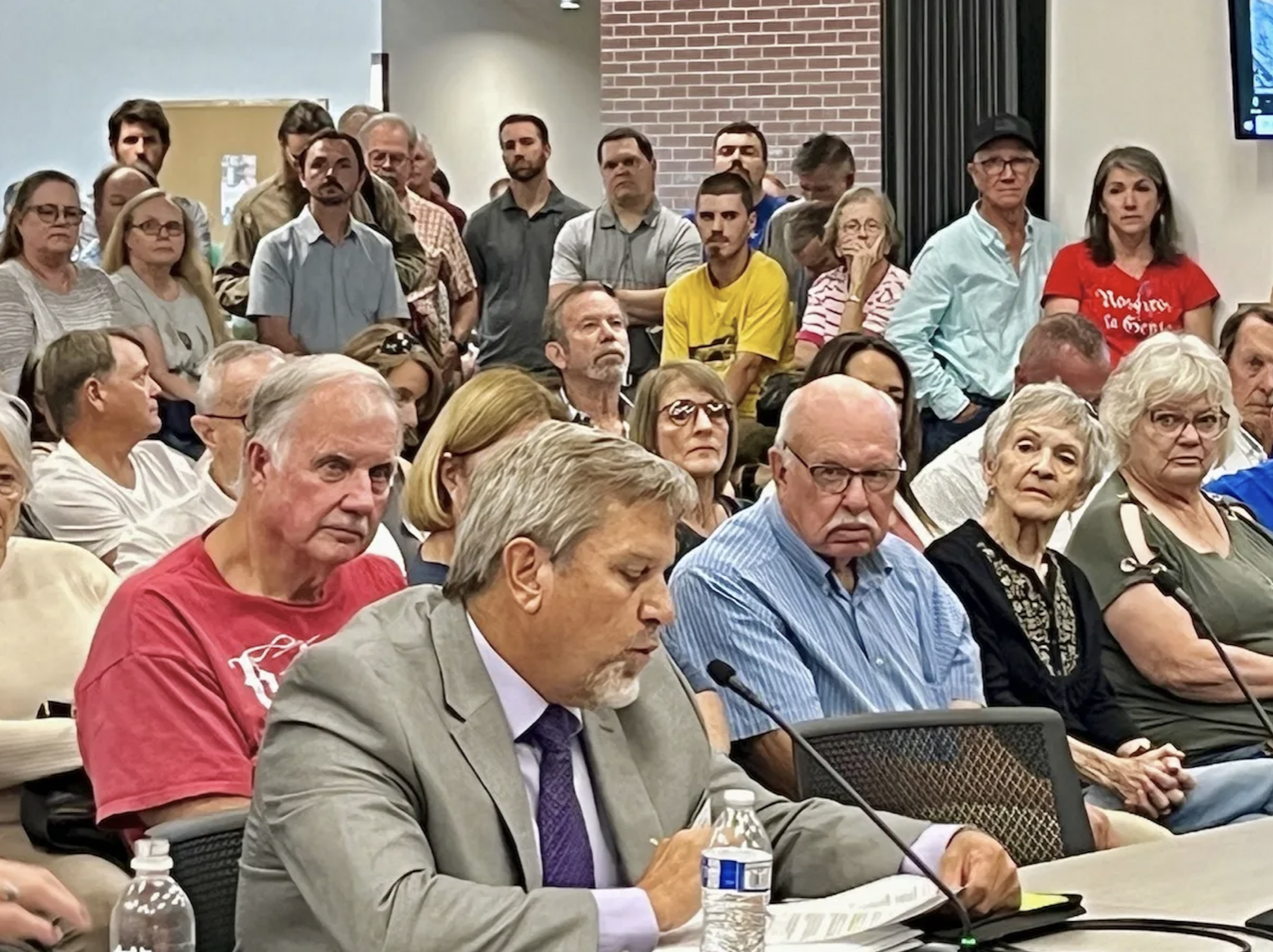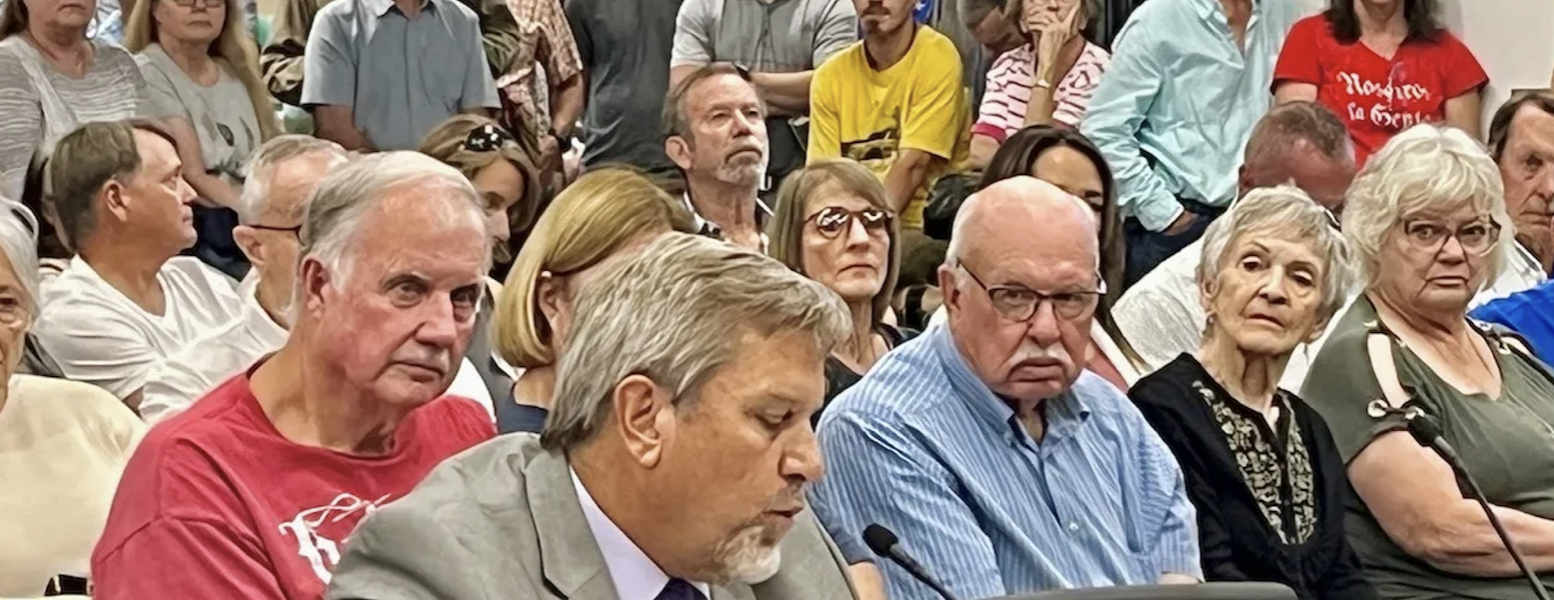
• Rocky Mountain Power’s 29.2% rate increase would be a major blow to the state’s economy and possibly force legislative action, a lawmaker said.
By Dustin Bleizeffer, WyoFile.com
Rocky Mountain Power’s proposal to hike electric utility rates in Wyoming by an average of 29.2%, if approved, would put households and businesses in peril and only serve to line the pockets of the company’s shareholders and executives, which includes its parent company PacifiCorp’s owner, billionaire Warren Buffett.
That was the consensus among about two dozen people who spoke at a public comment hearing held by the Wyoming Public Service Commission Thursday in Casper.
“We’re going to lose a lot of businesses in the state when we start raising those costs,” Natrona County Commission Vice Chairman Dave North told Public Service Commission officials. “We need to have some justification. I just can’t see any way that the citizens of the state of Wyoming can afford to pay an additional 29-to-34%.”
Approximately 200 people attended the hearing at the Thyra Thomson Office Building, forcing organizers to open a spill-over room to accommodate the crowd. In response to the proposed increase — the largest utility rate hike in recent history in Wyoming — Gov. Mark Gordon and other state officials asked the commission to add more public comment hearings around the state.
The next hearing regarding the rate case will be at 5:30 p.m. Sept. 18 at Central Wyoming College in Riverton.
Among those who commented at Thursday’s hearing — elected officials, business owners, retirees, ranchers and fossil fuel workers — none believed that Rocky Mountain Power is being honest about its actual expenses, and expense forecasts, that are driving its request for higher electric rates.
Casper Mayor Bruce Knell alleged the utility has purposely inflated its request as a starting point to bargain for something lower that would more accurately reflect the actual level of its increasing costs.
“They even said this when they met with us last week, that they knew they were asking for too much,” Knell said. “Let’s actually ask for what you truly need, because the way of doing business this way is not appropriate. This is a $134 billion company, and it’s doing business like they’re selling a used car. That’s very bothersome.”
Rocky Mountain Power sometimes settles a proposed rate increase with state regulators based on specific stipulations, but it “does not artificially inflate the results of its expenditures,” spokesman David Eskelsen said. “All supporting financial information is disclosed to the commission, staff and intervening parties.”
The general consensus among commenters was the utility’s shift away from coal for generating electricity, and its spending to add renewable sources of energy, is likely the primary driver behind increasing expenses. The shift represents a double-jeopardy for Wyoming by diminishing revenues from fossil fuels while increasing the cost of electricity for residents, businesses and government.
“Rocky Mountain Power has been pulled by a radical left-wing agenda to invest in unreliable [renewable energy] generation,” Rep. Clark Stith (R-Rock Springs) said.
The company says its continued reliance on fossil fuels is responsible for the bulk of rising expenses given the price volatility of those commodity markets. Its shift to more renewable sources of energy — along with federal production tax credits — has saved Wyoming ratepayers an estimated $85.4 million, according to Eskelsen.
But most in attendance Thursday were not convinced. Several elected officials said the proposed rate increases are a case against renewable energy.
“The bulk of this [renewable] energy is not serving our Wyoming residents,” Mills Mayor Leah Juarez said. “Yet we are the ones who are assisting in building the infrastructure.
“If the commission chooses to approve the 29% total,” Juarez continued, “as mayor I will have no choice but to take a stand and start saying ‘no’ to [renewable energy] projects coming to Natrona County. There will be no more renewable farms in Natrona County under my [mayoral] term if this is the price that we have to pay.”
No municipality has such authority over projects outside its borders.
Rate cases
Rocky Mountain Power, the largest regulated monopoly utility in the state serving about 150,000 customers, filed a “general rate case” in March to set prices for the next several years. It says it needs to increase rates by an average of 21.6% to cover an extra annual $140.2 million in expenses necessary to serve its Wyoming customers.
At the same time, the company is asking for a temporary rate increase — an average of 7.6% — to recover $50.3 million of about $90 million in unexpected fuel cost and power purchase overruns in 2022 due to extreme weather events, according to its April filing with the state. Extreme cold, heat and drought last year spiked demand for electricity, forcing the utility to purchase natural gas, coal and “power purchases” at premium pricing, according to Rocky Mountain Power.
For example, as homes and businesses cranked up the heat in response to a cold snap that settled over much of North America in December, utilities were forced to compete for a limited supply of natural gas, temporarily pushing the market rate for the commodity beyond 400% of what it sold for in previous months, according to the company.
A portion of the $50.3 million energy cost adjustment rate increase has already been granted to Rocky Mountain Power. However, that rate case is still under review and subject to final approval.
The Public Service Commission will make a determination on both rate cases before the end of the year.
Risk and reward
Both residents and elected officials took aim at requests by Rocky Mountain Power to shed its risk of bearing part of fuel-cost overruns and its proposal to earn a maximum rate of return in Wyoming of 10.3%.
Regulated utilities in Wyoming typically split the risk of fuel costs with their customers in what’s referred to as a “cost-sharing band.” Currently, Rocky Mountain Power is responsible for 20% of fuel-cost overruns, while its Wyoming customers pick up 80%. In its current request, the utility wants to eliminate the cost-sharing band to make Wyoming customers accountable for 100%.
“They’re not going to take any market risks,” Rep. Stith said. “And if that’s the case, then the rate of return on equity should likewise reflect that fact.”
Though he has faith in the Public Service Commission to weigh Wyoming’s best interest in the rate cases, Stith said the Legislature is ready to take action if it becomes apparent that residents take all the risk and Rocky Mountain Power reaps all the benefits of rising energy costs. One effort lawmakers may take up again is a proposal for deregulated energy zones, Stith said, which could allow for more independent electrical power structures within the state.
“If the result of this is that we have unacceptable rate increases, then I think for the state Legislature, everything will be on the table,” Stith said.
Comments regarding Rocky Mountain Power’s proposed rate cases can be submitted via email at wpsc_comments@wyo.gov, or mailed to 2515 Warren Ave., Suite 300, Cheyenne, WY 82002.
WyoFile is an independent nonprofit news organization focused on Wyoming people, places and policy.






